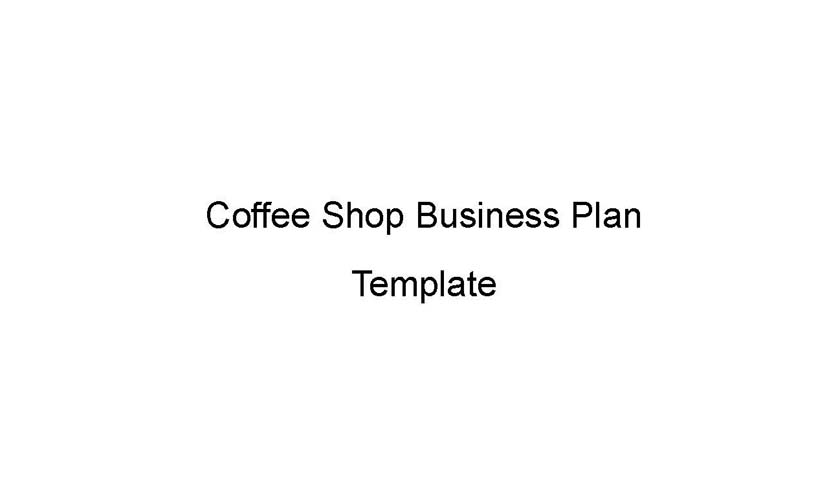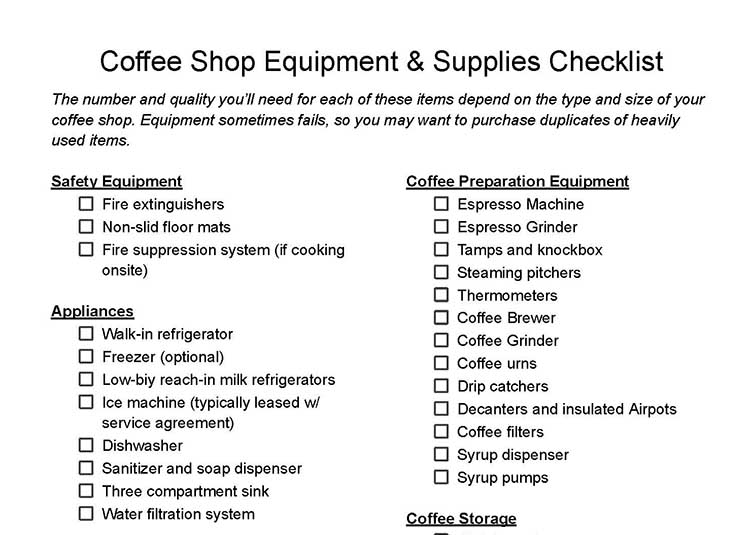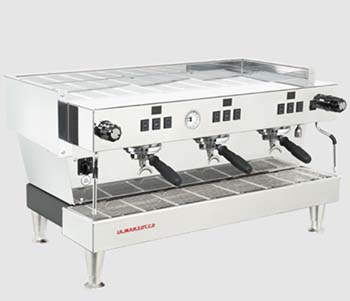Opening a coffee shop is a great way to combine the strengths of a food service and a retail business. Six to 12 months and a $50,000 to $300,000 budget are all it takes to start a coffee shop in most locations. We’ll walk you through the steps you need to take to open an independent or franchise coffee shop and offer options for smaller footprint businesses like coffee kiosks, coffee trucks, and coffee carts.
As you're starting your own business, you're going to need to keep your books in order. QuickBooks Online is our pick for the best overall small business accounting software. Get 50% Off for 3 Months |
|
Step 1: Research the Market
The first step to launching your coffee shop is familiarizing yourself with the market where you plan to open your shop. The more you know about the coffee scene in your area, the better. Here are some general trends to keep in mind as you begin your coffee shop journey.
To get a handle on your local coffee community, follow these steps:
One of the best ways to do research in your market is to visit all types of coffee shops and take great care in noting how they operate. At this stage in your research, you want to learn from anyone who is in the business. Spend some time checking out their online presence, too; websites and social channels offer a wealth of information.
When you’re conducting your competitive research, the goal is to look for ideas you might want to employ in your business. It’s important to be a keen observer of what’s happening throughout each coffee shop visit—from the impression you get before you enter to your overall satisfaction as you leave.
You’ll want to visit a dozen or more coffeehouses before starting your business. Vary your research so you visit both large, moderate, and small shops. Don’t be afraid to strike up casual conversations with managers and employees, as many are willing to share their knowledge with you. Take thorough notes at each stop along the way, as they’ll be invaluable as you move forward.
Visit each shop during peak and non-peak times to get a feel for the flow of business. A few things you’ll want to note when visiting competitor coffee shops include:
- What menu items are offered?
- What is the price for each menu item?
- What items are made in-house, and which are bought-in?
- What promotions and special offers are currently running?
- How is the shop laid out?
- How many employees are working and what are they doing?
- What are customers ordering?
- How long are customers waiting for their orders?
- How many customers stay in the shop after getting their order? What do they do if they stay?
- What are the general ages and demographics of the customers?
- What type of decor, furnishings, and music set the tone?
- Is the shop active on social media? Which platforms?
- Does the shop have a website?
At this stage, it’s most helpful to take literal notes. Have a notebook or a spreadsheet for recording your observations. After you’ve visited several shops, look through your notes to identify trends. These trends will help you make the best decisions about everything from your menu items to your name and location.
Step 2: Design Your Concept
After you’ve done your market research, it’s time to figure out what niche your coffee shop will fill in your community. You’ll need to pick a name, decide what style of beverages and food—if any—you’ll serve, and come up with branding. It helps to start by precisely pinpointing your ideal customer. The research you completed in the previous step will help you do this.
Identify the most likely customer type in your location, and design your coffee shop to cater to their tastes. A coffee shop catering to college students will have a different name, branding, and operating hours than a shop that supplies caffeine to workers in a downtown office tower. But before you get too far down the road, you need to answer one question: will you open an independent coffee shop or a franchise shop?
What is a coffee shop “concept?” In the food service business, the word “concept” is a popular catch-all term that describes a business’s service style, cuisine, decor, menu design, and name.
Once you’ve decided what type of customer your coffee shop will most likely cater to, you’ll have another important question to answer: Should you open an independent coffee shop or a franchise shop? Like many food service businesses, a coffee shop might be an independent business or operate as an outpost of a franchise. There are many popular coffee shop franchises to choose from, including one of America’s favorites, Dunkin’ (formerly Dunkin’ Donuts). Let’s take a look at the pros and cons of each below.
Independent vs Franchise Coffee Shops
| PROS | CONS |
|---|---|
| No franchise or royalty fees | No support from a corporate structure |
| Full creative control over menu, name, location, and policies | Must create branding, menus, floorplan, etc., from scratch |
| Set your own operating schedule | Must source vendors and suppliers for yourself |
| Total design flexibility | Shop concept is unproven |
| PROS | CONS |
|---|---|
| Customers are already familiar with the brand | Annual license fees of $15,000 - $150,000 |
| All processes, procedures, menus are designed for you | Royalty fees of 4% to 10% of sales |
| Brand concepts are proven to work | Limited ability to flex creative muscles |
| Benefit from brand’s marketing efforts | Approval process can be tedious |
There are dozens of coffee shop franchises to choose from. The selection listed below are good jumping-off points to begin your research for various types of coffee shops.
Dunkin’ | The Coffee Bean and Tea Leaf | Aroma Joe’s | Biggby Coffee |
|---|---|---|---|
 | |||
Initial Franchise Fee: $1,000 to $90,000, depending on shop size | Initial Franchise Fee: Varies; contact for a quote | Initial Franchise Fee: $12,500 to $25,000 | Initial Franchise fee: $20,000 |
Best for: Brand recognition | Best for: Multi-unit franchises | Best for: Seasonal offerings and expanded beverages beyond coffee | Best for: Small footprint shops and kiosks |
If you want the stability that comes from working with an established brand with a proven business model, you’ll probably want to start a franchise coffee shop. If the idea of creating your own store from scratch excites you, starting an independent coffee shop is likely the best route for you.
Each coffee franchise has its own approval process and investment requirements. If opening a coffee shop franchise interests you, it is best to reach out to the franchisor directly to request more information. Read our guide to financing a franchise to learn more about getting the funds you need to get started.
You want to ensure your coffee shop’s name is memorable, aligns with the overall feeling of your brand, and isn’t already trademarked.
Here are a few techniques you can use when naming your coffee shop:
- Focus on coffee: Include the word coffee in your name—or a “coffee-related” term such as bean, espresso, perks, grounds, or grind—so that people instantly recognize what you’re selling.
- Be playful: Puns and rhyming names are often both fun and memorable.
- Focus on why your customers are buying: Many people are buying coffee to wake up or recharge, so you can work that theme into your coffee shop name by using words like octane, boost, or wired.
- Add your name to the shop: Some successful coffee shop names include the first name of the owner, which typically evokes a friendly and casual vibe. You could also use your last name, which may evoke a more upscale or formal vibe.
- Reference a trait of your location: Think about the special traits of the area you serve. For example, if you’re near a courthouse, incorporate the word court or justice into your name. If you’re near mountains, you may want to add peaks or sky-high or another mountain reference to your name.
- Focus on your shop’s key feature: Use words that convey the vibe of your shop, such as express, if you focus on quick service, or hangout, if you’re going for a casual place to relax and chill with your friends.
You might choose to name your shop using one of the methods above, or you can go an entirely different route. That’s what Starbucks did to get its name. “Starbucks” comes from a character in Herman Melville’s classic novel “Moby Dick.” Starbuck was the name of the first mate.
Before finalizing your coffee shop’s name you must make sure the name you select is not trademarked. You can search the US patent and trademark database to find registered trademarks.
If you prefer, you can also consult with an attorney directly about trademark status for your coffee shop name. If you don’t have an attorney, you may want to search a site like LegalZoom to find a lawyer that specializes in business development and trademarks. The last thing you want to do is invest in branded signage, advertising, cups, employee uniforms, and menus only to find out you can’t use the name you selected.
Creating a menu plan involves taking great care to have the right mix of items, at acceptable profit margins, that your clientele will buy. By now, you’ve done your research and visited several coffee shops. You have a sense of the types of items offered by coffeehouses in your area and the range of prices you can charge.
When launching your shop, be sure to include items that you know are in demand based on your market research. You’ll also want to include other items that are unique to your coffee shop; these may help you differentiate your shop from the crowd.
- Choose a brewing style: Espresso beverages are a coffee shop classic, but you can expand your offerings with specialty drip brewing techniques like pour-overs, French press coffee, or house-made cold brew.
- Change offerings seasonally: Starbucks created the model for this with their seasonal flavors like pumpkin spice and peppermint mocha. Create a rotating list of specialties that you roll out seasonally to keep customers coming back.
- Offer non-coffee options: Tea is an obvious companion for coffee beverages, but don’t forget ready-to-drink (RTD) options like bottled water, juices, and soft drinks. These RTD beverages have the added benefit of driving sales without increasing your labor.
- Don’t forget food: You don’t have to have a full-service kitchen to serve food in your coffee shop. You can complete your food menu with baked goods from local bakeries to stand out from your competitors. Create a mouthwatering list of all your food offerings to drive add-on sales.
Step 3: Source Beans
This step will likely overlap with your menu development phase—but beans are such an important part of a coffee shop operation that bean selection deserves its own step.
If you choose a coffee shop franchise, this step will be done for you, so you can skip ahead. However, deciding what type of coffee to serve at your shop is the most consequential decision you’ll make as an independent coffee shop owner. You can either purchase roasted coffee beans from a wholesaler or roaster or purchase unroasted ”green” coffee beans to roast yourself.
Green coffee beans tend to be about one-third the cost of roasted coffee beans, but the equipment you need to roast beans is pricey. So, you don’t save much upfront, but over time, the cost savings could be considerable. Roasting your own beans also has cachet and offers you more control over your end product.
There are two major reasons you might want to roast your own beans:
- You are a coffee aficionado who is passionate about coffee roasting and knows how to do it well.
- You intend to sell your house-roasted beans to other businesses as an additional revenue stream.
If neither of these reasons is relevant to your business, you’re better off buying pre-roasted beans from a wholesale roaster. You can always start by buying roasted beans from a wholesaler and build an in-house roasting operation as your business grows.
If you want to learn how to roast coffee, the Coffee Skills Program, offered through the Specialty Coffee Association, is a popular program for those looking for comprehensive, hands-on coffee roasting training.
If you want to purchase roasted coffee beans wholesale, you have a few options. You can purchase through a mainline distributor like US Foods. Most independent coffee shops strike up a relationship directly with a wholesale roaster. This gives you the opportunity to proudly tout the reputation of the coffee brand in your shop. Wholesale roasters also typically provide some training materials to ensure that you and your staff prepare their coffee perfectly.
Popular Wholesale Coffee Roasters
Bluestone Lane | Intelligentsia | LAMILL | Sightglass | Stumptown |
|---|---|---|---|---|
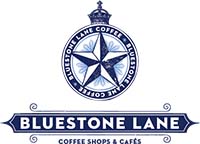 |  | 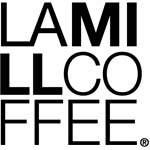 | 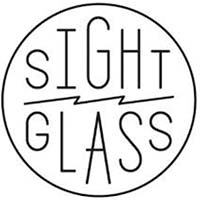 | |
Offers detailed and ongoing barista training, plus a seasonal single-origin coffee line | This massive roaster has training “labs” in Chicago, New York, Boston, Atlanta, Los Angeles, and Austin | Los Angeles-based wholesale roaster specializing in single origin coffees | Boutique San Francisco-based roaster specializes in developing custom coffee programs | This Oregon-based roaster will consult with you on design, layout, equipment, and menu development |
You’ll pay more for roasted beans than for green ones, but you get a lot for the investment. Wholesale roasters have a vested interest in preserving their brand quality, so they tend to provide complimentary barista training and may even help you source brewing equipment and consult on your overall menu and coffee shop layout. If you are new to the coffee industry, working with a wholesale coffee roaster will be the best move for your business.
The type of coffee you serve can be a major selling point, so we recommend you determine your coffee source before writing your business plan or raising funds. You’ll want to include your roaster—or your on-site roasting plan—in your business documents. This information can help you raise funds and show banks and investors that you are organized.
Step 4: Find a Location
Now that you know what style of shop you want to run and what type of coffee you’ll serve, you need a location. This step and the following one—filing business paperwork and writing your business plan—typically happen simultaneously because the costs of your location will become part of your business plan.
You want your business to be in the path of your ideal customers, as it’s imperative that your customers can easily find and access your shop. You should also consider the physical characteristics of the space. Will it meet your plumbing and electrical needs, or will you need to renovate? Will the landlord share the cost of renovations, or are you entirely on your own?
If this is your first time renting a commercial property, familiarize yourself with the ins and outs of leasing commercial real estate by reading our guide to commercial real estate leases before you begin your location search.
Step 5: Complete Business Paperwork & Business Plan
Whether you plan to be an independent or franchise coffee shop, you’ll need to file your business with the state—and typically the city—where you will operate. Since incorporating your business is a bit of paperwork, it makes sense to combine all the administrative tasks and write your business plan at the same time. You’ll need all of your paperwork in order before you can move on to the next step, raising funds.
Most coffee shops—even franchises—will need to incorporate as a business entity to do business in their state. You can typically find all the forms you need from your state’s Secretary of State’s office. Your Secretary of State’s office is usually happy to answer any questions you may have, or you can get free assistance from a Small Business Development Center (SDBC) if there is one nearby.
SBDC offices are partially funded by the United States Congress and affiliated with the Small Business Administration. Their primary purpose is to assist independent entrepreneurs with starting and operating small businesses. You can find your nearest SBDC chapter on The America’s SBDC website.
Filing fees for business licenses vary by state and business type. Costs tend to be less than $500. Most coffee shops register as a limited liability company (LLC), though certain franchises may advise you to register a different type of legal entity—like a partnership or corporation—depending on your franchise arrangements. If you plan to operate a multi-unit coffee shop enterprise or a multi-unit franchise, you should consult with an attorney and CPA to determine the best legal entity for your business.
Learn more about different types of legal entities for your business in our guide to LLC vs S-Corp vs C-Corp.
Write Your Business Plan
Your business plan will include an executive summary of your business objectives, where you plan to launch your coffee shop, types of products you’ll offer and anticipated profitability for each, a marketing plan, and a thorough financial plan along with financial projections. For your convenience, you can download the Coffee Shop Business Plan template that is provided below.
If you struggle with various aspects of creating your business plan—such as coming up with sound financial projections—contact your local SBDC as they can help with this, too.
Step 6: Open a Bank Account & Raise Funds
With your business plan in hand, you can start raising funds. Before you raise a penny, though, you should open a business bank account so your business funds remain separate from your personal funds.
This bank account is separate from your personal bank account. It is the account where you will receive investment funds and the account you will use to make your business purchases. When your shop is up and running, this is the account that will receive payments from your credit card processor and from which you will pay vendors and staff.
See our guides to the best small business bank accounts and top-recommended free business checking accounts to find the best bank for your business.
You’ll need between $50,000 and $300,000 to open a coffee shop. The biggest variables are the size of your shop and the market where you are located. Shops in busy urban centers will spend a lot more on rent than a coffee kiosk on a college campus.
This is where you flex your business plan. Pull that plan out to present to bank loan officers or prospective investors. The word “investors” might sound intimidating. But investors for independent coffee shops tend to be friends, family, and community members. Depending on your shop size, you may also be able to fund your business entirely with small business loans or business credit cards.
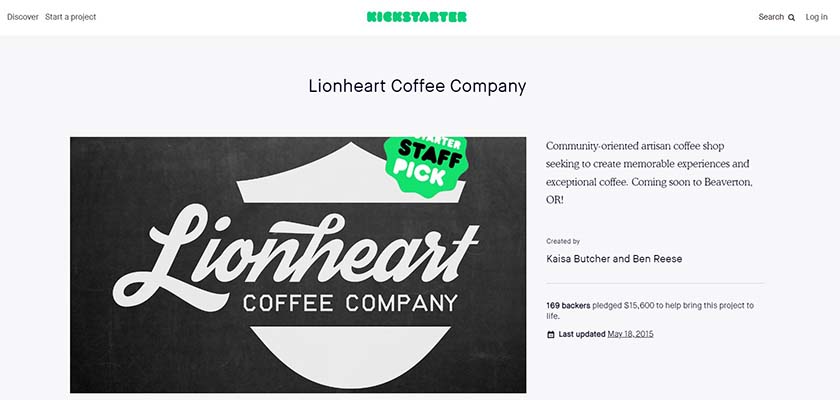
It is common to see coffee shop campaigns on crowdfunding sites like Kickstarter. (Source: Kickstarter)
Another alternative is crowdfunding. Crowdfunding is very popular for coffee shops. They are a good fit because coffee shops tend to have lower startup costs than a full-service restaurant. Coffee shops also have a reputation for becoming part of their communities, and your crowdfunding contributors can easily become your first regular customers.
Franchise coffee shops don’t do well on crowdfunding sites, though. If you’re planning to open a franchise, you’re better off requesting funding advice from your franchisor and seeking small business loans.
Our expert-written guides to getting a small business loan, the best easy business loans, and leading small business credit cards will help you apply for the funds you need to start your business.
Step 7: Purchase FF&E
Furniture, fixtures, and equipment is commonly referred to by the catch-all acronym “FF&E.” Once your coffee shop is open, you’ll see FF&E on all your monthly profit and loss statements; it’s a term that might haunt you. But now is the time to purchase all of those items. Coffee shop FF&E includes everything from your espresso machines and refrigerators to light fixtures and countertops.
There are several key types of FF&E that are uniquely important to coffee shops, like point-of-sale (POS) equipment and espresso machines. We’ll explore those in more detail in the expandable sections below.
The best coffee shop POS systems help you accept cash and credit cards, track cost of goods sold (COGS), help you manage inventory, and assist with employee scheduling. Most also include loyalty tools that collect customer information and track order history so you can send highly relevant email promotions to spark return visits. Loyalty tools frequently come at an additional cost, but for coffee shops, the extra money is well worth it.
There has never been a better time to buy a POS system. Many cloud-based systems compete aggressively for customers, so it’s not hard to find a good deal. For example, popular food service POS providers Toast and Square for Restaurants both offer a baseline POS with no monthly software fees. Toast also gives you the option to pay as you go for hardware, so you can get started for $0 upfront.
Popular Coffee Shop POS Systems
 |  |  | |
Best For | Coffee shops of all types | Growing cafes needing a system that can scale with their business | Small cafes preferring a free option |
Monthly Software Fees |
|
|
|
Payment Processing Rates | From 2.6% + 10 cents (*other processors available) | From 2.49% + 15 cents per in-person transaction | From 2.6% + 10 cents per in-person transaction |
Contract Length | 1 year | 2 years | Month-to-month |
There are, of course, many more options for a food service POS. You shouldn’t be surprised to spend $0 to $99 per month for software and from $300 to $600 for a full POS hardware setup, including a touchscreen display, cash drawer, receipt printer, and card reader. Your costs will vary based on whether the system operates on consumer-grade tablets or industry-grade terminals. You’ll also pay higher monthly fees if you need additional software functions like drive-thru management.
Because of the relatively low average sale per customer—which for a single coffee drink is around $3 to $4, depending on the order—coffee shops rely on repeat business. So make sure your POS system offers strong loyalty tools.
You’ll need a lot of standard food preparation equipment like walk-in and reach-in refrigerators, a dishwasher, and handwash sinks. You’ll also need coffee-specific equipment like grinders, brewers, and espresso machines. It’s best to purchase standard equipment from restaurant suppliers like Webstaurant Store, Sysco, and others.
We recommend buying new equipment when your budget allows since new equipment comes with manufacturers’ and suppliers’ warranties. Equipment that tends to need a lot of maintenance, like ice machines and dishwashers, is commonly leased. These items typically come with regular service visits to ensure they are properly calibrated and in good working order.
The La Marzocco Linea espresso machine—one of the most popular commercial espresso machines on the market—retails for $14,000 to $20,000, depending on how many group heads you need. (Source: La Marzocco)
Group head: The group head is the part of the espresso machine that forces the hot water through the espresso puck to extract the coffee. The more group heads your machine contains, the more espresso shots you can pull in a short time. Espresso machines with more heads are generally more expensive.
Espresso machines, grinders, and brewing equipment will be major purchases. As with ice machines, you may prefer to lease your espresso machine rather than purchase upfront. Espresso machines can be pricey, and they are also temperamental. So, leasing can be a good deal because a lease typically comes with an on-call technician to help if you need repairs.
Though with solid training (typically available from a wholesale roaster), purchasing a new espresso machine outright is also a good bet. New machines will have manufacturer’s warranties, and you won’t have to worry about any previous damage impacting the machine’s performance (a major concern with used espresso machines). Your roasting partner is typically eager to advise you on the best equipment, so you don’t need to look far for help making a decision.
Step 8: Obtain Permits, Licenses & Insurance
In addition to the general business documents that you filed in previous steps, you’ll need several permits and licenses before you can sell food and beverages to the public. Many permits cover general business functions, like sales tax permits (also called a “vendor’s license”) resale licenses that excuse you from paying taxes on items you plan to resell. You’ll also need health and safety licenses from your local health department. Click through the tabs below for a detailed list of the permits and insurance you’ll need to obtain.
- Doing Business As (DBA) Registration: If you operate your coffee shop under a different name than the LLC you registered with the state, you’ll need a DBA to document the fictitious name.
- Employer Identification Number (EIN): This number is your business’s identification for federal tax purposes. You can register for free on the IRS website; you’ll typically be assigned a number within 48 hours.
- State tax ID: You’ll also need a state tax identification number to file sales and payroll taxes with your state. This is also typically free, and in some states, called a state tax license.
- Business license: Some states roll the business license process with registering an LLC. Others have a separate process for business licenses. Check with your local Secretary of State’s office for more information about your location.
- Reseller’s license: This is the license you need to excuse you from paying sales tax on wholesale purchases. Your vendors will need a copy of it.
- Certificate of Occupancy: This is typically issued by the local fire safety authority and allows you to open your premises to the public. If you are moving into a space that has already operated as a coffee shop and you don’t make substantial changes to it, then you may be covered by the previously existing certificate of occupancy. But this can vary state to state; some require a new certificate any time a new tenant takes occupancy of a retail space.
Food service licenses are issued by the health department in your city, county, or state. In some places—like California—you’ll need a license that covers your space and separate food safety licenses for each of your employees.
Food service licenses include:
- Health permit: This permit covers your location, enabling you to sell food and drink to the public. Prices can vary widely from state to state but if you budget at least $1,000 for this, you’ll rarely be surprised. This permit always requires a physical inspection of your premises, where you are typically awarded a letter grade. In many locations, you’ll be required to prominently display this grade in your front entrance.
- Food Safety Manager’s Certification: Most locations require at least one staff member to have a food safety manager’s certificate. Typically the certificate is held by the owner or general manager. To get one, you need to pass a food safety test, typically offered through ServSafe. Prices range from $99 to $179 depending on whether you need to take the food safety class and whether you take the assessment online or in-person.
- Food handler permit for employees: Several states, like California, Texas, and Illinois, require all food service workers to have their own food handler’s permit. Your staff can obtain these for $15 to $20 through ServSafe, though some states offer a lower-priced course through their health departments.
You’ll need a few types of insurance to cover your coffee shop. First, you’ll need to cover the property itself, plus a policy to cover your business liability. Since most coffee shops have employees, you’ll also need workers’ compensation insurance.
- General Business Liability: This policy protects your business from common business risks like bodily injuries and property damage. General liability is especially important for food service businesses that serve customers on their premises. It’s only a matter of time before an employee spills hot coffee on a customer (or their laptop) or you have a foodborne illness claim.
- Commercial Property: This covers You may prefer to combine your general liability with commercial property in what is called a Business Owner’s Policy (BOP). Your insurance broker will be able to advise you if a BOP is a better fit for your location and business size.
- Equipment Coverage: This is an additional, optional policy that covers your highly used and most expensive equipment. It is especially useful if you spent a few thousand dollars on a brand-new espresso machine.
- Worker’s Compensation: If you have employees, you need worker’s compensation insurance. Most states set minimum worker’s comp limits. So, check with your local labor department for requirements and your insurance broker for guidance.
Step 9: Hire & Train Staff
The startup staffing stage of running your coffee shop can be difficult. Exceptional service is a must so you want to make great hires. You also want to be smart about how many people you hire. Labor will likely account for 30% or more of your costs; hire too many people, and costs balloon, hire too few, and service could suffer.
Write Manuals & Standard Operating Procedures (SOPs)
Before you bring any employees on board, you need to create basic procedures for preparing and serving various menu items. Since the quality of your coffee is so essential to your business, the most important procedures you create are those for safe and correct beverage preparation. If you work directly with a preferred wholesale coffee roaster, they can likely provide you with excellent training information for your team.
You’ll also want to create SOPs for less glamorous procedures like cleaning the espresso machine, using the POS, and calling in sick or requesting time off.
Our human resources experts have written comprehensive guides (and free templates) for everything from creating your time off policy, to writing an employee handbook and setting up employee benefits.
Write Job Postings
Most coffee shops have at least two to 10 employees, besides the owner. The number of employees you need depends on your hours of operation. The longer you are open, the more staff you will need.
Coffee shops tend to be busiest during the morning rush from 6 a.m. to 10 a.m. But if you have the staff, you can also boost your sales with a later afternoon hit when customers get out of school and work between 3 p.m. and 6 p.m. With opening and closing duties, that could mean you need staff from 5 a.m. to 7 p.m.; too long a day for a single person.
Click through below for a look at the most common coffee shop employees:
Baristas prepare all types of coffee drinks and are familiar with all types of coffee brewing equipment, from espresso machines to drip brewers, pour-overs, and French presses. In most coffee shops, every single staff member—regardless of seniority or additional duties—is trained as a barista. Even you, the owner, should train as a barista if you don’t already have those skills. Pay for baristas ranges from $12 to $22 per hour, plus tips. Wages vary based on location and experience.
An experienced barista keeps business moving during a rush, which can greatly increase your sales. Coffee lovers in busy city locations are also known to follow their favorite baristas from shop to shop. So, it is definitely worth it to pay for experience, even if an experienced barista costs you twice as much per hour.
Busy coffee shops might have some non-barista cashiers. Cashiers tend to be extremely entry-level and are typically paid minimum wage plus a share of tips. Cashiers are a good option if your shop is busy and you want to save some money on labor costs. But it’s generally a good idea to treat this role as a barista trainee; eventually, you want all of your staff to be able to turn out excellent coffees and espresso drinks. It makes scheduling and shift coverage much easier when all of your team members can perform any assigned task.
If your shop has a drive-thru, you may also have a drive-thru attendant. This position is similar to a cashier, but they have the added skill of keeping orders organized and managing the queue of waiting cars. Like a cashier, a drive-thru attendant typically earns minimum wage plus tips, unless they are also a trained barista, in which case the pay scale is from $12 to $22 per hour, plus tips.
A shift supervisor is a good idea if you need to cover some simple managerial tasks when you can’t be in the shop yourself. Shift supervisors are typically expert baristas who take on tasks like managing cash drawers and delegating tasks to other hourly employees. Shift supervisors are different from managers in that they are typically hourly employees that do not have the power to hire or fire other staff members. They also do not control the schedule.
So in most locations, shift supervisors can participate in tip pools. But you should check your local labor laws to be sure.
If you do not plan to actively work in your coffee shop, you’ll need at least one manager. The manager is typically paid an annual salary. According to ZipRecruiter, coffee shop manager salaries ranged from $32,000 to $55,500 in 2023, with the average manager earning $42,450 annually.
In addition to being a skilled barista, your coffee shop manager should order supplies, verify payroll records, hire, train, coach, and terminate employees and write schedules. They should also maintain daily, weekly, and monthly reports, communicate profits and losses to ownership, and develop ideas to expand or improve the business. Managers cannot participate in tip pools.
See our guides to advertising a job and writing job descriptions to help you staff up your coffee shop. And learn how to distribute shared tips among hourly employees in our guide to tipping methods; the hours-based tip pool is the method used by most coffee shops.
Train Staff
Staff training is another place your roasting partner or franchisor can be a big help. If you opted to open a coffee franchise, your franchisor will provide training materials and sometimes even send a training manager to assist with training your team. Roasters want to ensure that their coffee is prepared correctly, and they also tend to provide a wealth of training options, from in-person training at your shop, to written manuals and training videos. Some roasters, like Intelligentsia, even have training classrooms in several major cities to provide in-depth training.
It’s helpful to create a new hire checklist when training is fresh in your mind. So each time you bring new employees on board, you’ll remember exactly what information you need to cover.
Step 10: Order Opening Inventory
To get your supplies ahead of opening to the public, you’ll need to open vendor accounts with food and beverage suppliers. You should already have your coffee supplies locked in, but you’ll also need a supplier for all your milks, flavorings, sweeteners, and paper goods. If you don’t plan to cook food in-house you’ll also want to buy baked goods that are popular with coffee drinkers, like bagels, scones, muffins, and more. Read our guide to food suppliers for details on finding suppliers and opening accounts.
To ensure that you have enough supplies on hand before you open to the public, you should plan to create your accounts about a month before your opening date. Place your first orders at least two weeks ahead of your opening date so you can get a sense of all the logistics involved. Larger suppliers may only deliver to your area once a week, so you’ll need to plan ahead to ensure you never run out of stock.
Don’t forget an account with a linen service. You won’t need linen napkins and tablecloths, but coffee shops do go through hundreds of side towels and mop heads every week. You’ll likely find it less expensive to lease these items than to manage cleaning and restocking them yourself. Look for a linen service that also provides aprons; that way, you ensure your staff always looks presentable.
Step 11: Advertise
Success won’t happen by chance; it’s imperative that you develop effective promotional and advertising campaigns for your coffee shop. Promotions don’t necessarily have to be costly to work. What’s important is getting the word out about your business. This will be an ongoing task that requires regular investments of time, attention, and effort. A little creativity doesn’t hurt either. In addition to the traditional channels of buying an ad in the local paper, you should try:
- Social media: Coffee lovers tend to find local spots on Instagram and TikTok. Younger consumers like to get a sense of the “vibe” of a space before going, so take lots of pictures and videos of your pre-opening process—featuring your coffee drinks, of course—to get customers excited about your opening.
- Community outreach: Moreso than any other food business, coffee shops have reputation as community hubs. Partner with a local nonprofit ahead of your opening, or host a booth a community happening like a street fair, farmers market, or 5K run to get some face time in your community.
- Events: Poetry readings, art showings, and live acoustic music are classic coffee shop tropes for a reason. Connect with local artists or literary groups to liven up your space. Just be careful about music; some locations will require you get a cabaret license before hosting live performances.
- Classes and contests: Host a coffee tasting, coffee brewing class, or a latte art class and contest. These are great ways to build a fan base (and increase customer knowledge and respect for your offerings).
- Email and text marketing: Leverage your POS system’s customer profiles to send targeted messages. Most systems these days let you create filtered lists of customers with upcoming birthdays, frequent guests, or those that haven’t made a recent purchase. Compose some deals and messages to bring those customers back in your doors.
Starting a Coffee Shop Frequently Asked Questions (FAQs)
In most locations, you can start a coffee shop for $50,000 to $300,000. The costs vary by the size of your shop, the favorability of your lease terms, and the size of your staff. In a major market like New York City, where real estate is at a premium, your start-up costs can go much higher, though.
Like most food businesses, coffee shops have pretty tight margins. You can expect to earn a 5% to 7% profit margin most of the time. But you’re only likely to hit this if you keep a close eye on your costs. A good point-of-sale (POS) system is your friend here; most will alert you to lost stock or employees that are getting close to hitting overtime.
If you can keep your sales flowing and your costs down, you can expect to regularly turn a profit on your shop. The owner of a well-run coffee shop can expect to earn $50,000 to $175,000 annually.
It is not a good idea to run a coffee shop with no experience. But your coffee roaster (or franchising partner if you go that route) can help you get the experience you need quickly. Every coffee roasting company wants to ensure that their coffees are presented perfectly. And because your business is their client, they have vested interest in your success. So you can typically get everything from barista training to marketing advice from your wholesale coffee roaster.
As a coffee shop owner, your education will be ongoing; you also need to keep your eye on changing trends and customer preferences. Understanding what your customers want—and don’t want—as well as how buying behaviors change over time is key to operating a thriving business.
The most successful shop owners keep their pulse on what’s happening as new coffee products, equipment, and marketing strategies emerge on a regular basis. There are many industry resources available to expand your knowledge about coffee and the coffee shop industry.
Here are a few popular resources and associations:
- The Specialty Coffee Association: The association offers a variety of memberships, starting at $70. It also publishes the “SCA 25 Magazine,” has its own podcast, and hosts a variety of live events. As an SCA member, you’ll also automatically gain membership to the Barista Guild of America.
- Fresh Cup Magazine: This monthly magazine features timely conversations and ideas for coffee shop owners. A subscription costs $48 per year.
- Barista Magazine: A one-year subscription for this leading trade magazine costs $30.
- Coffee Talk Magazine: Keep up on the world of coffee by signing up for this quarterly magazine, available for free in both print and digital formats.
- National Coffee Association: This trade association for the coffee industry offers a wealth of industry resources and training, as well as coffee-related news.
- Roasters Guild: If you want to stay up to date on coffee roasting techniques and news, you may want to join the Roasters Guild. Annual membership dues are $200. The Guild also offers training as well as a Roaster Certificate program.
Bottom Line
Starting a coffee shop is a pretty straightforward process with a ton of room for creativity. A coffee shop has great potential as a money-making business, whether you open an independent shop or opt to work with a franchisor. With a budget of $50,000 to $150,000, well-roasted beans, and well-trained baristas, you’ll be on your way to creating a business that is vital to your surrounding community. And all the coffee you can drink is a pretty good fringe benefit.

